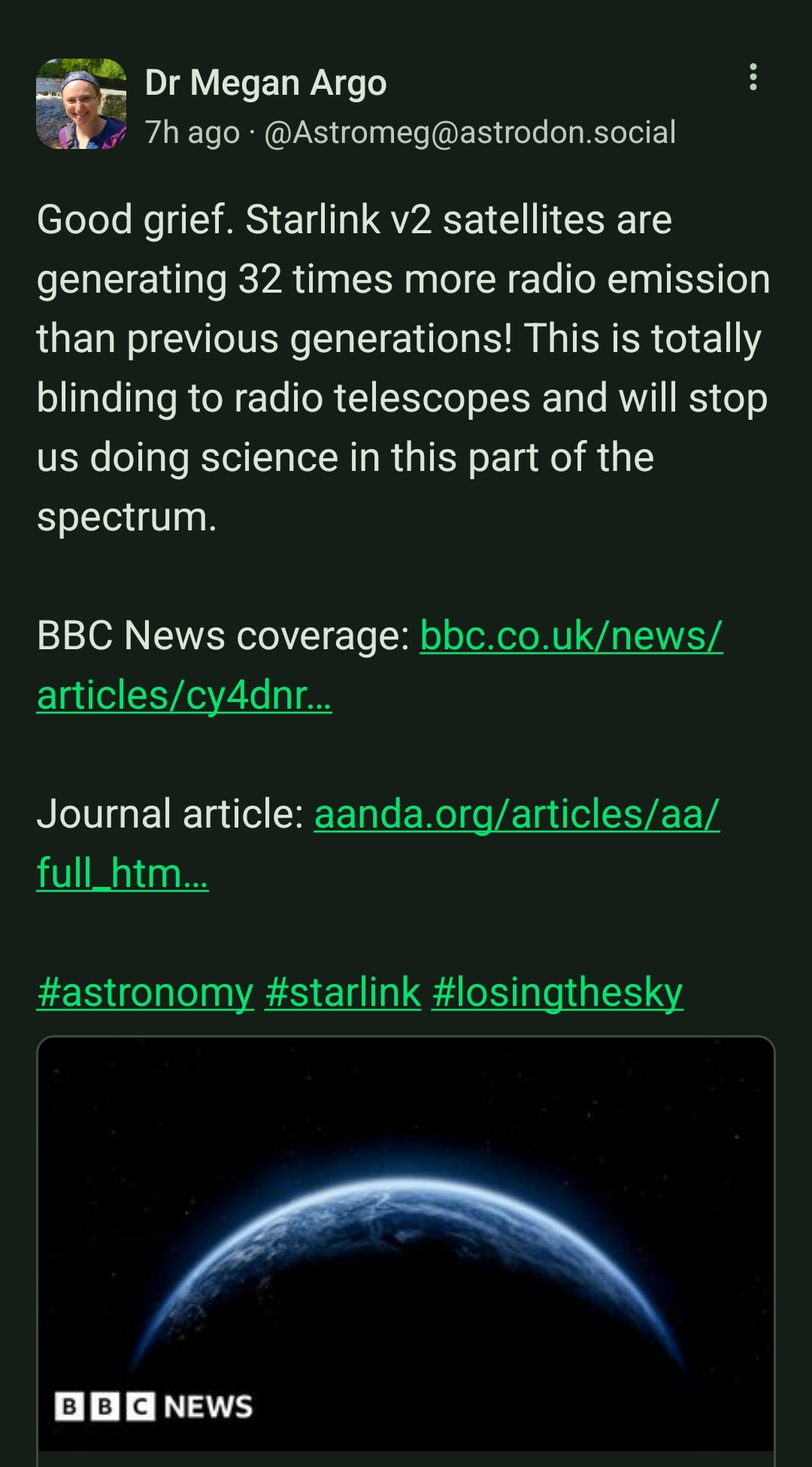this post was submitted on 18 Sep 2024
1218 points (97.4% liked)
Microblog Memes
7599 readers
2572 users here now
A place to share screenshots of Microblog posts, whether from Mastodon, tumblr, ~~Twitter~~ X, KBin, Threads or elsewhere.
Created as an evolution of White People Twitter and other tweet-capture subreddits.
Rules:
- Please put at least one word relevant to the post in the post title.
- Be nice.
- No advertising, brand promotion or guerilla marketing.
- Posters are encouraged to link to the toot or tweet etc in the description of posts.
Related communities:
founded 2 years ago
MODERATORS
you are viewing a single comment's thread
view the rest of the comments
view the rest of the comments

On the Kessler point, Starlink birds fly at an altitude where they will deorbit in 4-8 years if they go dead, so that particular orbit will always be fairly clean, and if a Kessler event does happen, the debris will deorbit in a reasonable length of time.
A portion of the debris from collisions would enter elliptical orbits though so might need more time to de-orbit. But loosing all LEO satellites and even just 4-8 years without use of LEO would be an absolute catastrophe. You could still launch satellites to medium or geosynchronous orbit though.
Where will they go after they deorbit? Do we get em back?
They burn up on re-entry, at least they're supposed to.
Thanks, atmosphere 🙂❤️ that's interesting design! Will any of the debris reach the planet or is it designed to break apart in a particular fashion?
Not in a solid form. There may be some undesirable effects though at greater numbers, we don't really have good data. Here's a blog post by the European Space Agency talking about a couple studies on the effects of satellite reentry. Note that the satellites they simulated were significantly larger than the Starlink satellites.
My understanding is they're designed to completely disintegrate.
And by doing so, aluminium in them is attacking the ozone layer that is already having a tough time...